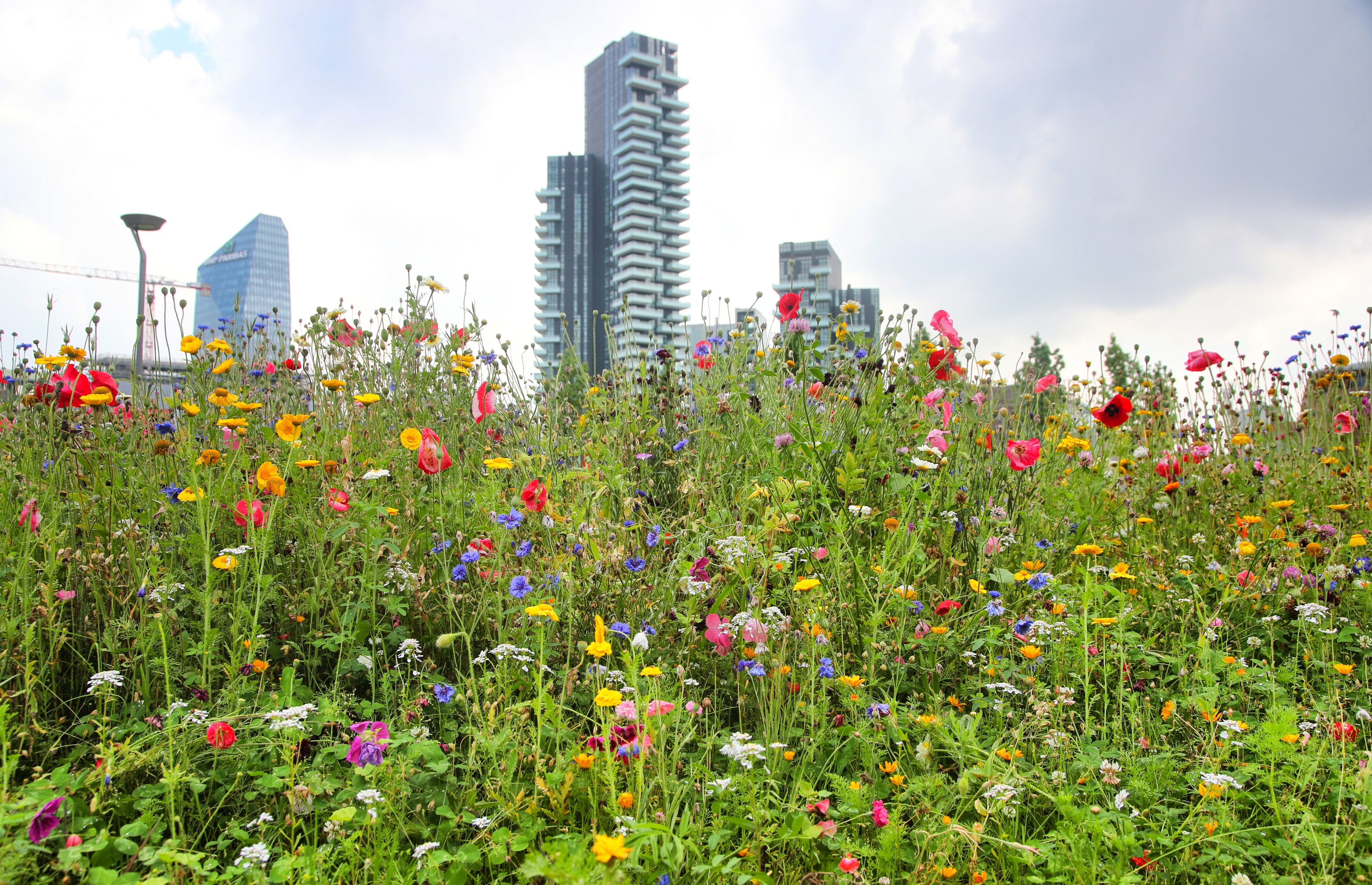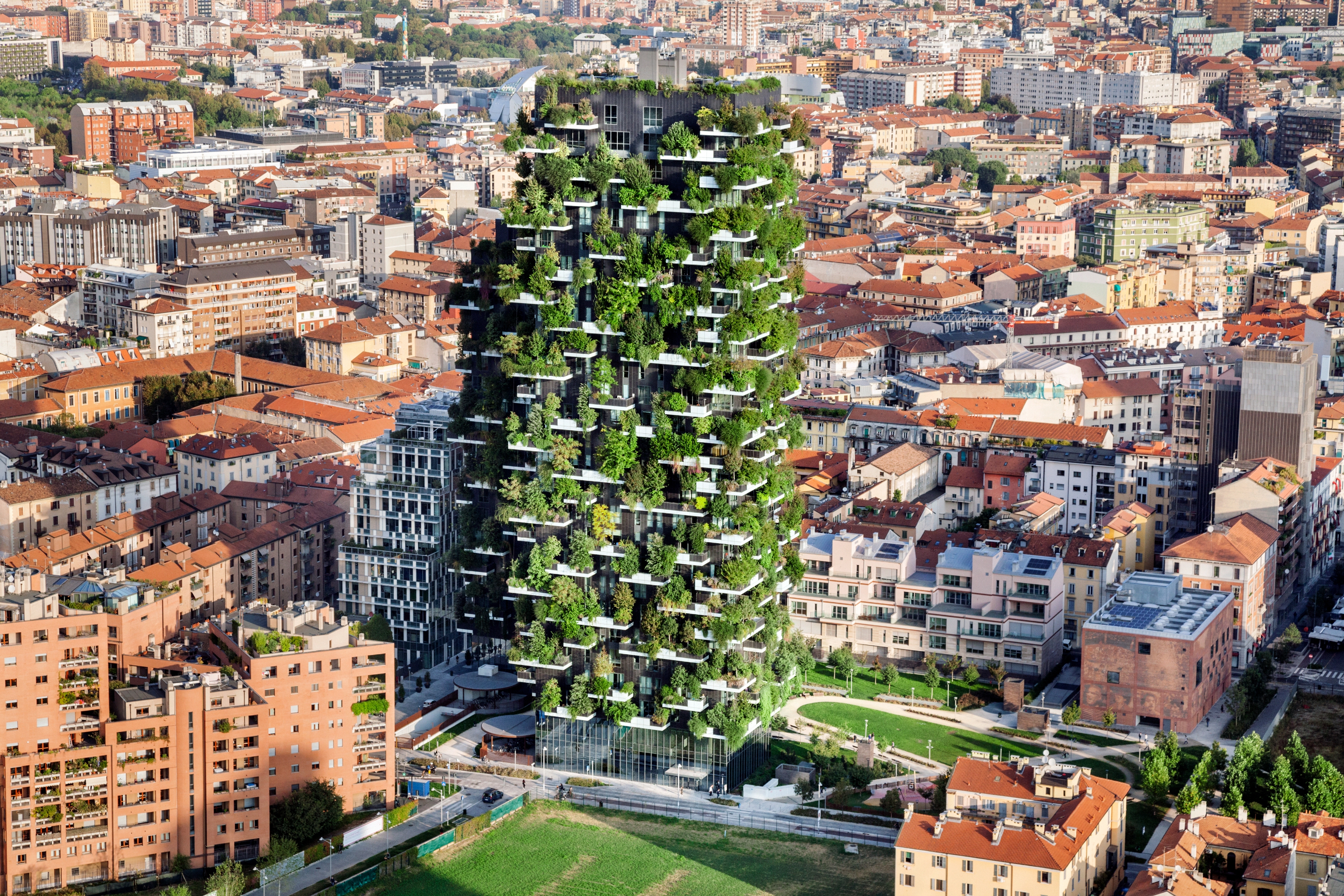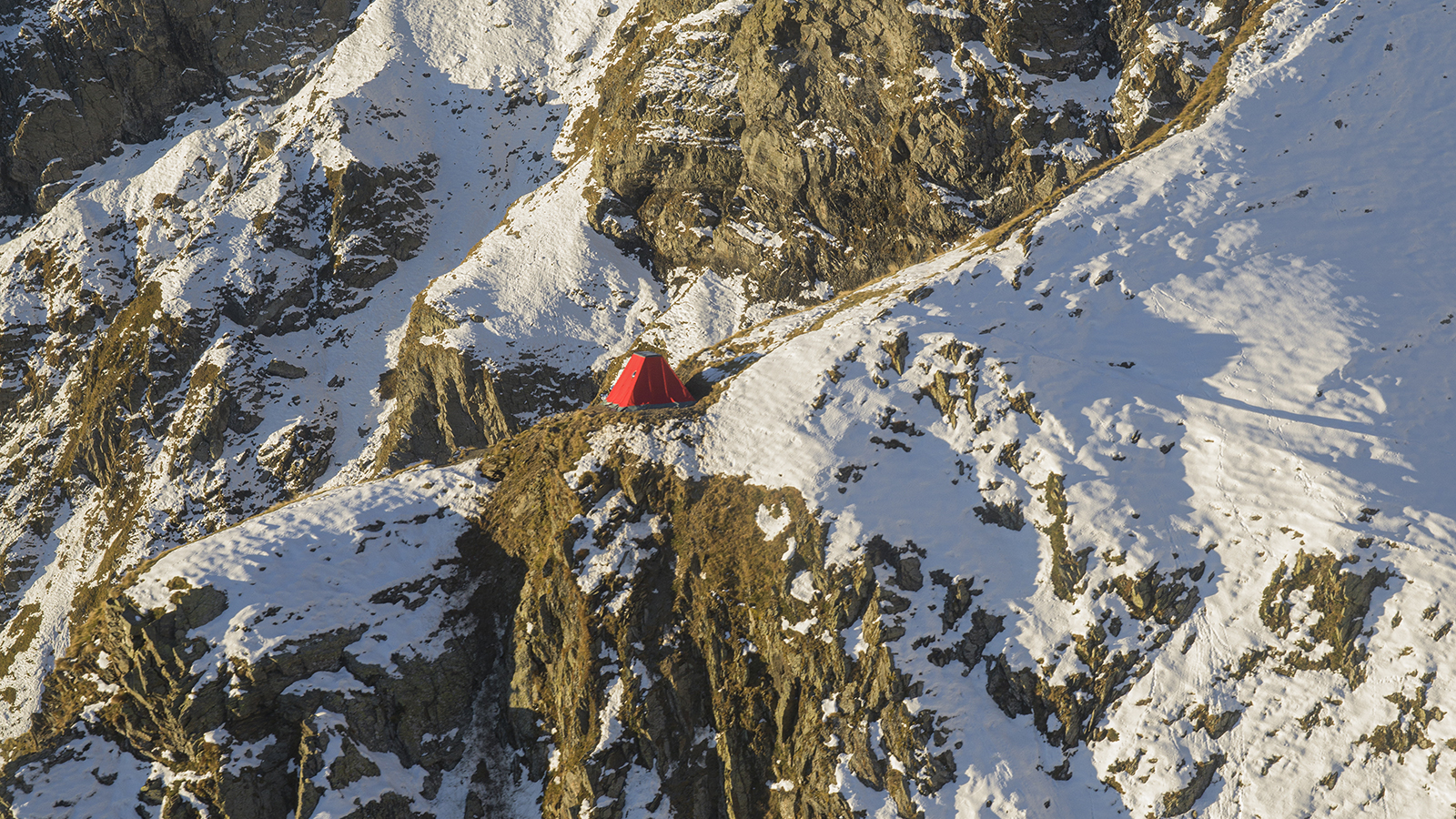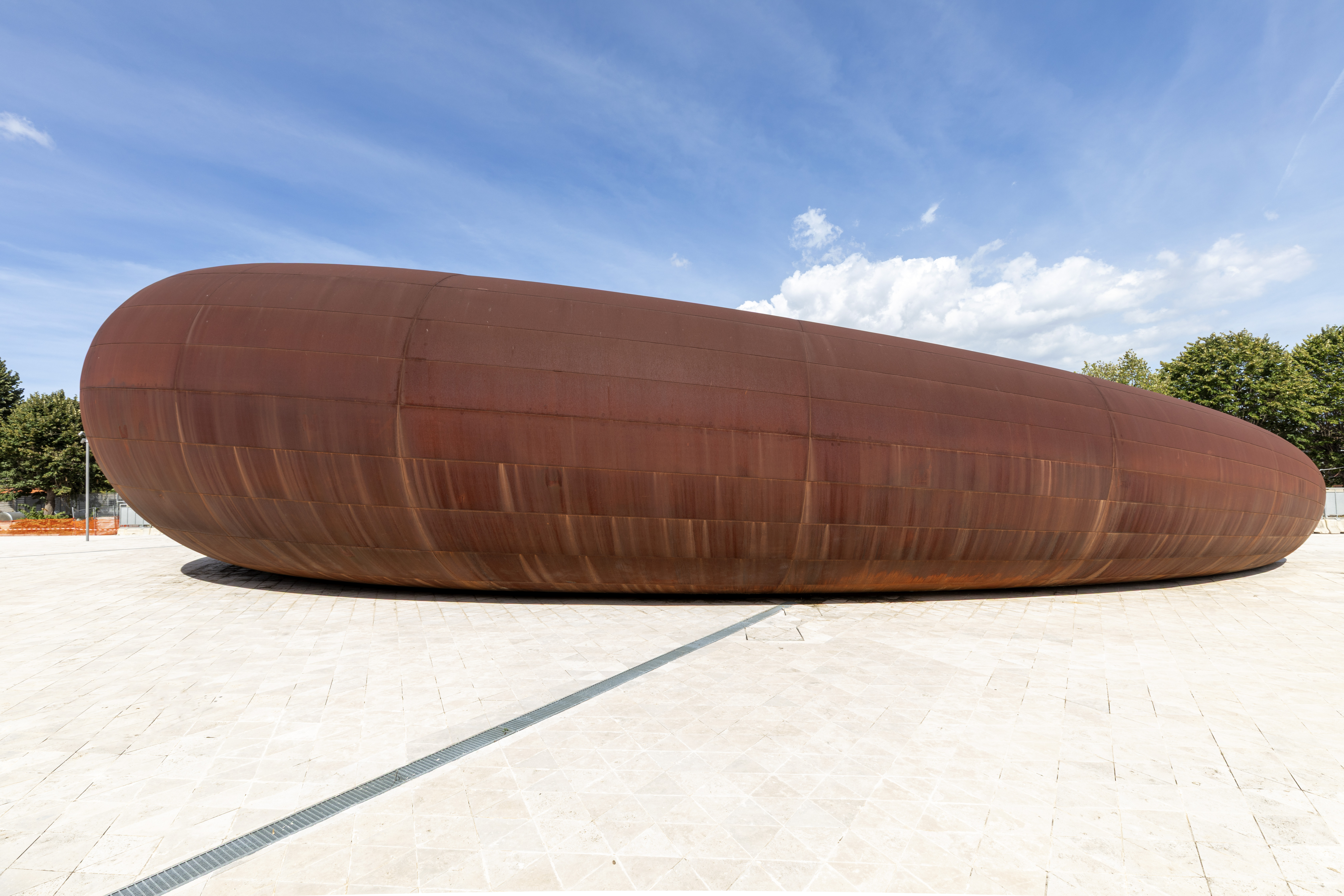Milan’s Porta Nuova urban success story
Milan’s central Porta Nuova district is at the heart of the city's urban development. A combination of good planning, international architecture and urban forestation has been key to its success – measured by the droves of locals, tourists and architecture fanatics alike who frequent the BAM public park, says Marco Sammicheli, Wallpaper* Milan editor

BAM Park by Inside Outside and Petra Blaisse, with Simona and Franco Giorgetta
At the heart Porta Nuova district of Milan is BAM, a public park designed for developer COIMA by the Dutch studio Inside Outside and Petra Blaisse, together with Simona and Franco Giorgetta, covering approximately 10 hectares – including a dozen circular forests each dedicated to a plant species, a labyrinth and flower beds of perennial plants designed by Piet Oudolf. Read Oudolf’s advise on garden design here.
Milan is a ‘born-again-city’ – its rebirth celebrated by important international events such as Expo 2015 and the upcoming Winter Olympics of 2026 (Milan-Cortina D’Ampezzo). The great transformation of the city (recognised by our Best City Wallpaper* Design Award 2019) is however, not sudden or radical, but a complex development that started a good 20 years ago, when whole areas of the city were redesigned after industrial production began to uproot and move away.
These areas were not in the city’s hinterland, but were well inside the city itself. So, as opposed to other examples of experimental developments in Europe, such as London’s Canary Wharf or La Défense in Paris, Milan needed a design that took into consideration the memory of the past, the needs of the present, and that very Italian quality of ‘inertia’ towards the challenges of the future.
The area that best expresses this approach is Porta Nuova, a very central quarter of Milan nestled between train stations and historic neighbourhoods. This part of the city was renovated by COIMA and the Fondazione Riccardo Catella. With the collaboration of private investors and public institutions, they developed infrastructure and new building projects, involving some of the biggest names in international architecture today.

The buildings of Porta Nuova have become the landmarks that best represent the growth of the contemporary city of Milan. The area is home to the Bosco Verticale complex by Stefano Boeri as well as buildings by Cesar Pelli, Piuarch, Cino Zucchi, Kohn Pederson Fox, Michele De Lucchi and Mario Cucinella. It has quickly become popular with both the public and the media, and is visited by around 10 million people each year.
RELATED STORY

The Biblioteca degli Alberi (Library of Trees) is the most recent addition to the area. As well as BAM, a public park designed by the Dutch studio Inside Outside and Petra Blaisse, together with Simona and Franco Giorgetta. It covers approximately 10 hectares – comprising a botanical garden, many fully accessible services, and a rich programme of over 200 activities per year engaging people in fitness, food, music and art. A dozen circular forests each dedicated to a plant species and seven fields of aromatic herbs, aquatic plants and sweeping lawns sit side by side with a labyrinth and great flower beds of perennial plants designed by Piet Oudolf.
‘BAM is a sort of urban carpet,’ say Manfredi Catella, chairman of COIMA, and Kelly Russell Catella, managing director of the Fondazione Riccardo Catella. ‘It is a pedestrianised area that, with its gardens, ramps and landscapes, unites the new buildings with the surrounding city.’
Porta Nuova and BAM are Milanese destinations that prove you don’t need to spend money to spend quality time in the city. They show how urban forestation can create a new sense of community. And, trees truly have become the new Milanese ambassadors, as later this year Milan will host the World Forum on Urban Forests at Triennale di Milano in collaboration with FAO and Politecnico di Milano, running 21 – 22 November.


The Bosco Verticale complex by Stefano Boeri in the Porta Nuova district
Receive our daily digest of inspiration, escapism and design stories from around the world direct to your inbox.
-
 ‘I want to bring anxiety to the surface': Shannon Cartier Lucy on her unsettling works
‘I want to bring anxiety to the surface': Shannon Cartier Lucy on her unsettling worksIn an exhibition at Soft Opening, London, Shannon Cartier Lucy revisits childhood memories
-
 What one writer learnt in 2025 through exploring the ‘intimate, familiar’ wardrobes of ten friends
What one writer learnt in 2025 through exploring the ‘intimate, familiar’ wardrobes of ten friendsInspired by artist Sophie Calle, Colleen Kelsey’s ‘Wearing It Out’ sees the writer ask ten friends to tell the stories behind their most precious garments – from a wedding dress ordered on a whim to a pair of Prada Mary Janes
-
 Year in review: 2025’s top ten cars chosen by transport editor Jonathan Bell
Year in review: 2025’s top ten cars chosen by transport editor Jonathan BellWhat were our chosen conveyances in 2025? These ten cars impressed, either through their look and feel, style, sophistication or all-round practicality
-
 Modernist Palazzo Mondadori’s workspace gets a playful Carlo Ratti refresh
Modernist Palazzo Mondadori’s workspace gets a playful Carlo Ratti refreshArchitect Carlo Ratti reimagines the offices in Palazzo Mondadori, the seminal work by Brazilian master Oscar Niemeyer in Milan
-
 Wang Shu and Lu Wenyu to curate the 2027 Venice Architecture Biennale
Wang Shu and Lu Wenyu to curate the 2027 Venice Architecture BiennaleChinese architects Wang Shu and Lu Wenyu have been revealed as the curators of the 2027 Venice Architecture Biennale
-
 At the Holcim Foundation Forum and its Grand Prizes, sustainability is both urgent and hopeful
At the Holcim Foundation Forum and its Grand Prizes, sustainability is both urgent and hopefulThe Holcim Foundation Forum just took place in Venice, culminating in the announcement of the organisation's Grand Prizes, the projects especially honoured among 20 previously announced winning designs
-
 Carlo Ratti reflects on his bold Venice Architecture Biennale as it closes this weekend
Carlo Ratti reflects on his bold Venice Architecture Biennale as it closes this weekendThe Venice Architecture Biennale opens with excitement and fanfare every two years; as the 2025 edition draws to a close, we take stock with its curator Carlo Ratti and ask him, what next?
-
 Step inside Casa Moncler, the brand’s sustainable and highly creative Milanese HQ
Step inside Casa Moncler, the brand’s sustainable and highly creative Milanese HQCasa Moncler opens its doors in a masterfully reimagined Milanese industrial site, blending modern minimalism and heritage, courtesy of ACPV Architects Antonio Citterio Patricia Viel
-
 Aldo Frattini Bivouac is a mountain shelter, but not as you know it
Aldo Frattini Bivouac is a mountain shelter, but not as you know itA new mountain shelter on the northern Italian pre-Alp region of Val Seriana, Aldo Frattini Bivouac is an experimental and aesthetically rich, compact piece of architecture
-
 The 2026 Winter Olympics Village is complete. Take a look inside
The 2026 Winter Olympics Village is complete. Take a look insideAhead of the 2026 Winter Olympics, taking place in Milan in February, the new Olympic Village Plaza is set to be a bustling community hub, designed by Skidmore, Owings & Merrill
-
 Anish Kapoor designs Naples station as a reflection of ‘what it really means to go underground’
Anish Kapoor designs Naples station as a reflection of ‘what it really means to go underground’A new Naples station by artist Anish Kapoor blends art and architecture, while creating an important piece of infrastructure for the southern Italian city